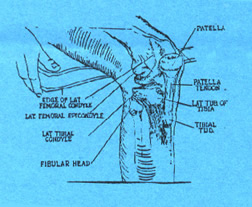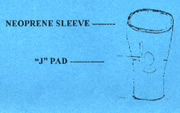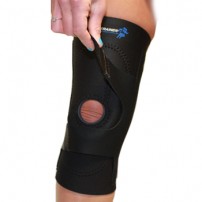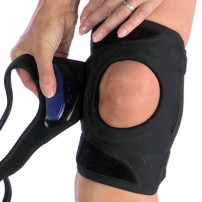Knee Caps
Subluxing Patella/Dislocating Knee Caps
Have you ever thought about the anatomy of your leg? What allows you to generate the tremendous force and endurance in the upper part of your leg – to kick footballs, hurdle, run, and cycle long distances. What allows this is the combined function of the thigh muscle, the kneecap and the shinbone. Because of the tremendous size of the thigh muscle, you can generate forces five times your body weight with the knee extension mechanism.
The Knee is like a steam shovel. The thigh muscle is the control cab and the winch. When the foot and tibia are firmly on the ground and the knee is straight, the extensor mechanism is fully wound up. When you sit in a chair or squat down, the quad muscle, the kneecap and the knee cap tendon stretch and control the squat. Once you are in the squat position, the quad muscles continue to work in order to keep you balanced.

Now stand up. The steam shovel works in reverse. The muscle-bone-tendon unit shortens and brings you back up into a
standing position. The kneecap travels like a train on a track. It fits into a V-shaped groove in the end of the femur. This cradles the kneecap as it slides up and down. If the knee cap balance is distorted by a shallow groove or muscle imbalance, the kneecap will not
perform properly.
If the kneecap slides partially out of the groove when you stand or squat, this is called SUBLUXATION. If it comes completely out of the groove, it is a DISLOCATION. It is interesting to note that women are more prone to subluxations and dislocations than men. This has to do with the fact that women tend to be more knock kneed and the knee cap has more of a tendency to slide to the outside and out of the groove.
TREATMENT
Most likely, your therapist or trainer has put you on an exercise program to strengthen the muscle group that will help hold the knee cap into the correct position when you stand or sit.

The other thing they may have done is to suggest the use of a brace specially designed to help keep the kneecap “on track”. This is aneoprene knee sleeve that houses a specially designed “buttress” in the shape of a “J”. Hence, the term J-pad knee support came about.
Remember, wearing a knee support will not eliminate the condition. It only helps to reduce the possibility of it subluxing. The combination of proper exercise and a dynamic support should provide you with relief. There are some common sense things you should avoid. Things like repetitive exercises that require you to do a full squat, duck walks, knee extension exercise starting with your knee fully bent and sitting in the “tailor” position.
Now, a true dislocation is a different story. This is a very painful experience as the kneecap comes completely out of the groove. It may or may not have gone back in place on its own. You probably would have been placed in a knee immobilizer for a few weeks, followed by extensive rehabilitation. Can a subluxation turn into a dislocation? Sure it can. That is why it is very important to take the problem of subluxations seriously and stay with your treatment program.

